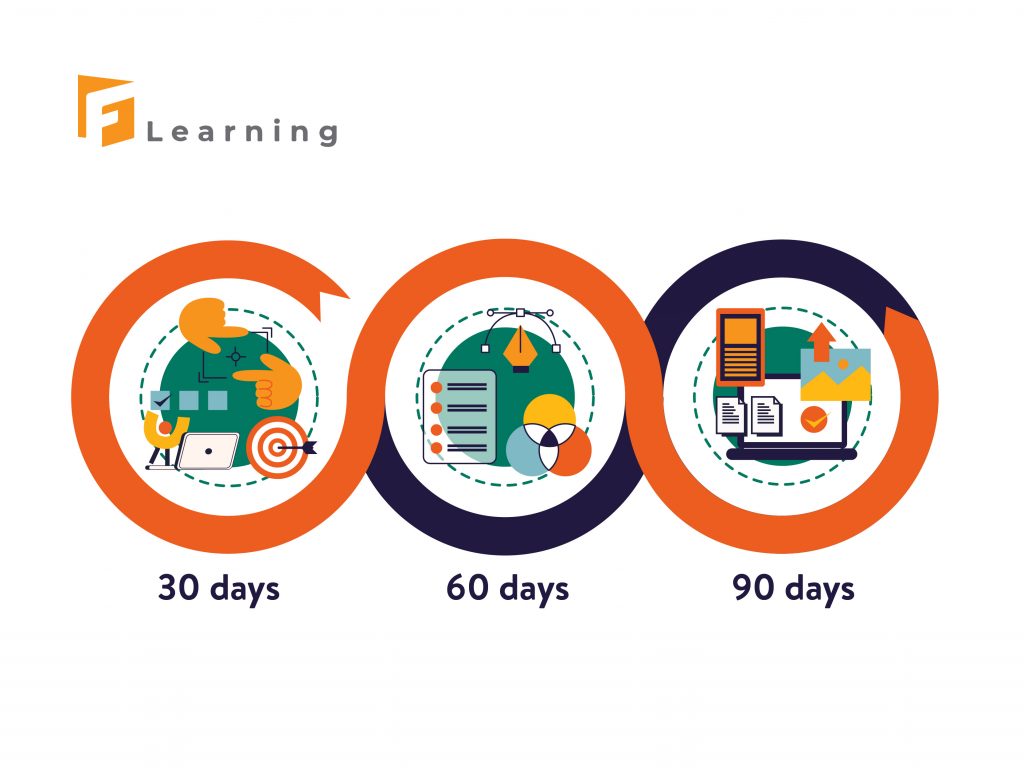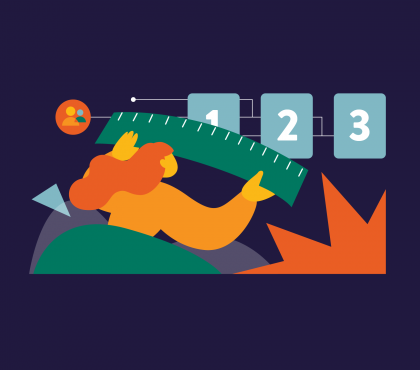Employee onboarding is similar to the honeymoon period at work. It is the time when you, as a business, begin your long-term relationship with your new employee. Therefore, the new employee onboarding period is when the employer-employee trust is developed.
In this blog, we’ll go over employee onboarding in greater detail with all the work you need to do to ensure an effective process.
What is employee onboarding?
Employee onboarding is the process by which new employees become acquainted with the company, its people, and its culture.
An onboarding period serves two purposes: on one hand, it is intended to get new hires operational as soon as possible, and this is the traditional role of new employee onboarding. On the other hand, it is used to form organization members’ first impressions of the company, and this is a more recent role of new employee onboarding.
What does a good new employee onboarding plan require?
Although the employee onboarding process of each company will be unique, here’s a sample program to get you started.
#1: Before the first day (pre-boarding)
Employee pre-boarding should begin with a welcome email to your new hire, in which you express your delight at having them on board and provide some details about the next steps. This could include:
- First-day information (what time to show up, how to get inside the building, what is on the itinerary)
- A request to complete new hire paperwork
- A warm introduction
- A request for preferred equipment (i.e. Mac vs. PC, or a standing desk)
- Information about the history, team, and culture of the company
#2: First day
Your new hire’s first day can be filled with meaningful introductions, early learning, and celebration if you provide a strong pre-boarding experience:
- Arrival later and coffee/tea with the hiring manager
- Introductions to the team and a tour of the office (it can be helpful to include an organizational chart)
- Lunch with the team
- Training on devices and resources essential to the role (i.e. the equipment they will be using right away)
- Check-in with the hiring manager on the first day to go over role responsibilities and goals.
#3: First week
Rather than bombarding your new hires with knowledge on their first day, distribute it out over the course of a week or so.
- Insights into the culture of the company
- Details on the history of the company
- Product training
- Request for feedback on initial onboarding
- Check-in with a buddy
- Additional training on devices and resources relevant to the role
- Day 7 check-in to acknowledge achievements and identify the areas where the new employee may require additional support
#4: First 90 days
Employee onboarding programs that are effective stretch out 90 days to help new hires fully move up.
- Check-ins on days 30, 60, and 90 to acknowledge accomplishments and identify areas where the new hire may require additional support.
- Continuous learning and development
- Request for additional feedback on onboarding
- Check-ins with friends (once per week for the first month, once or twice per month thereafter)
5 Best Practices for Employee Onboarding
#1: Integrated HR practices
In an ideal world, the job description and job posting serve as the foundation for the 90-day plan. The 90-day plan should include the reason for the job’s creation in the first place, as well as an accurate representation of the job description and job posting. If this is not the case, the candidate has applied for a different job.
In other words, if they arrive at work and discover that the actual job is not what they applied for, the outcome is an unhappy hire and a much higher likelihood of the employee leaving within the first year. This is why it is critical to integrate these Hr activities, conduct a thorough job vacancies intake, and match your job description to your job posting.
#2: Make use of checklists
Checklists are useful because a manager can physically print them, place them on their desk so they can see them every day, and check the boxes as they onboard new employees. It gives structure and ensures that all necessary steps are taken.
If you want some tips on how to create an effective checklist for the new employee onboarding, check out this video below for more details
#3: Consistent onboarding
The quality of your checklist is only as good as your consistency. If managers have a checklist but do not use it, your onboarding practices will deteriorate quickly. Implement these checklists and make sure they are used on a regular basis. You are only as good as your last performance, so concentrate on this and put it into practice on a consistent basis.
#4: Continual evaluation
The onboarding checklist is functional for us, but it is not yet finalized. We receive feedback, improve our process, small details, and enhance our onboarding over time. Finally, your onboarding process must become your own. Your company has its own culture, stories, and habits, so tailor the onboarding process to those as they communicate your culture to new recruits.
#5: Make efficient workflows
Each organization has its own set of systems, and the process used by a company with hundreds or thousands of employees differs from the process used by a company with tens of employees.
Make the process, however, personal. Ensure that, regardless of the workflows you use in your organization, you use onboarding to develop a personal and solid link between the direct employer and the employees.
Find more about how to turn new people into team players faster & smarter with animation:
Conclusion
Employee onboarding is similar to the honeymoon period at work. It is the time when you pave the way for a strong, long-term employer-employee relationship. Successful employee onboarding is a reflection of the time and effort invested in them. Take the time to think about it and do your homework.
Read more:
- Microlearning For Employee 101: All You Need to Know
- Compliance Training 101: How to Engage your Employees?
- How to Develop Successful Learning and Development Strategy in 2022

Sean Bui, the founder and creative director of F.Learning Studio, is a respected leader in the e-learning and multimedia production industry. With over 10 years of experience, he has dedicated his career to helping organizations create engaging and impactful learning experiences.
Under his leadership, F.Learning Studio has grown into a trusted partner for organizations in the education, healthcare, and corporate training sectors, producing over 2,000 minutes of educational animation.




![Corporate Video Production Costs in 2025 [Full Pricing Guide] 4 image10 Corporate Video Production Costs in 2025 [Full Pricing Guide]](https://flearningstudio.com/wp-content/uploads/2025/06/image10-420x370.jpg)
